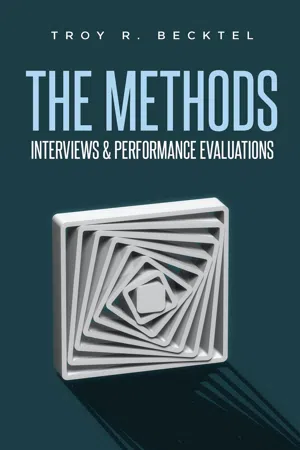![]()
CHAPTER 1
INTERVIEW PREPARATIONS
This guide makes certain assumptions to get started. For instance, I assume that you have organizational support to hire. I assume that you know the process for approval within your organization. And, of course, I assume that you are in a position that enables you to hire and fire personnel.
The very first item necessary to even think about beginning the interview process is a well-written job description that makes as much sense to an outsider, who knows nothing about your organization, as it does to you. This will be the tool used by anyone helping you with the search for potential candidates. If you haven’t written a job description before, there are many available resources and even software tools that have hundreds of prewritten examples to help you get started. Once you have a job description that reflects the role and level of overall empowerment that comes with the position, you are ready to get started.
I was so fortunate to begin my career path working with an entrepreneur who firmly believed in promoting from within. The same trait is still modeled effectively in more progressive companies that are employee-centric. If this is an option at your company, then this is where you start with your posting process.
If you are on your own, search the web for sites that allow you to post job descriptions. As these resources change so often, I have not included them in this guide. Additionally, there are many recruiting offices that would love to lend a hand in searching for your ideal candidate. If a recruiter is put to the task, make certain that you invest the time to sit down with them and clearly explain the soft skills that you are looking for from an ideal candidate but that might not be clearly represented in a job description. In addition, invest the time to describe the role and your organization to the recruiter. The more they know about your company, the better suited they will be to finding the best qualified candidates.
I have a brief story that I would like to tell regarding my personal experience with the “candidate-filtering process” and assistance from outside groups. To preface my story, I think it is important to share that there are a lot of great people who do not work in their respective field of study, training, or most qualified experience. That can be a key point to remember in your search as well.
Once upon a time (are you with me so far?), I was approved to hire a few technical call center resources as part of my team. Our process was to have our human resources department assist with the filtering of resumes in an effort to provide us with the most qualified resumes up front. In this case, like each case before, I had provided them with a job description as well as an internal posting. They used this information to filter the resumes for the best fit (or so I thought).
A couple of weeks passed by, and I had not received any resumes to review, so I paid our human resources group a visit. I asked them about their current progress. They told me that with the competitive job market, they hadn’t really seen anything that looked as though it was a match. They showed me the stack of resumes that they had combed through for the role and said that they weren’t even close. I asked to take them and review them for myself.
The very first resume was from a gentleman who had lost his job in the grocery industry as a result of the supercenter organizations’ influx into the area. He had been a meat market manager in a customer-facing position for more than fifteen years, which overqualified him for the customer interaction requirements of the role. In addition, after reviewing the typically overlooked “personal interest” section of his resume, I thought it was clear that he had the mechanical knowledge necessary to fulfill the qualifications. I brought the gentleman in and excitedly hired him, and within a couple of years, he was a lead technician and moving up within our organization.
The moral of the story is to learn how to read resumes, ...
